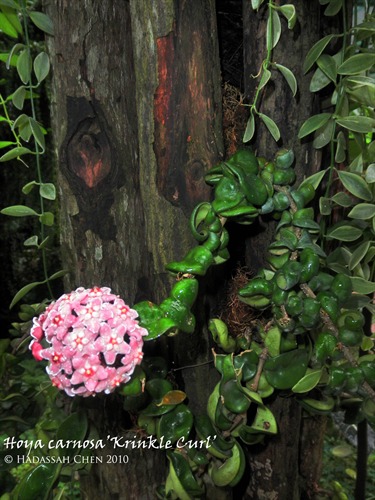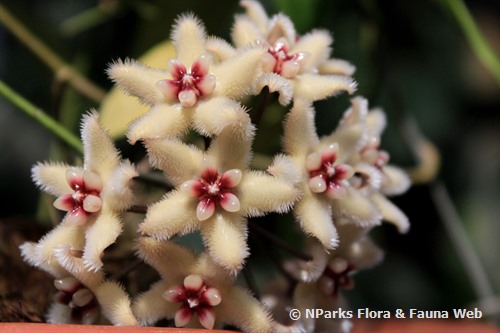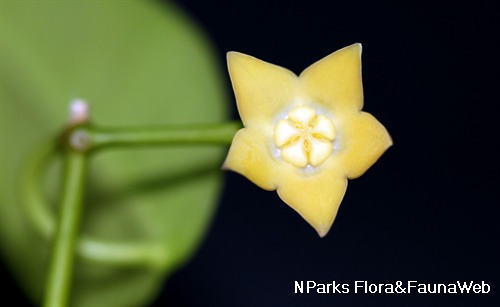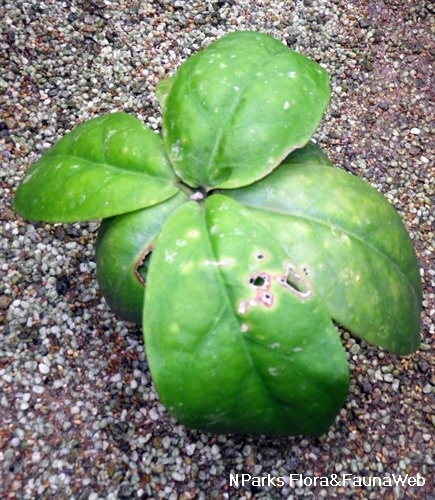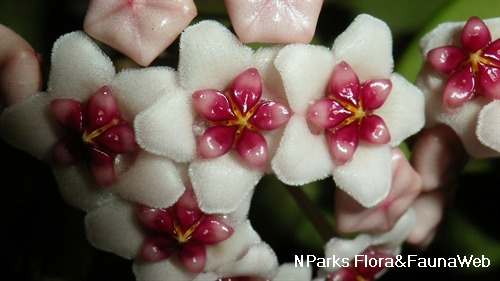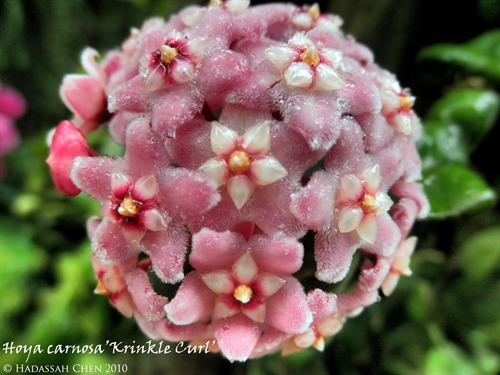
Name
Classifications and Characteristics
| Plant Growth Form | Climber |
|---|
Biogeography
| Native Distribution | Of horticultural origin |
|---|---|
| Preferred Climate Zone | Tropical, Sub-Tropical / Monsoonal |
Description and Ethnobotany
| Growth Form | Compact vine with contorted leaves |
|---|---|
| Foliage | Leaves 5-6 cm ling by 2-3 cm across, contorted, mid-dark green above, dull light green below. |
| Flowers | Flowers to 1cm across; corolla light - dark pink, densely hairy. Corona white, tinged with red towards the centre. |
| Etymology | The cultivar name 'Krinkle Kirl' refers to the contorted leaves |
Landscaping Features
| Desirable Plant Features | Ornamental Flowers, Ornamental Foliage, Ornamental Form |
|---|---|
| Landscape Uses | Small Gardens, Vertical Greenery / Green Wall, Skyrise / Balcony, Container Planting, Suitable for Hanging Baskets |
| Usage Hazard - Cons | Toxic Upon Ingestion |
| Usage Hazard - Cons Remarks | Avoid contact with milky/ white sap as it may cause skin irritation in certain individuals. Keep plants away from children and pets as sap could be toxic. |
Fauna, Pollination and Dispersal
| Pollination Method(s) | Biotic (Fauna) |
|---|
Plant Care and Propagation
| Light Preference | Semi-Shade |
|---|---|
| Water Preference | Moderate Water, Occasional Misting |
| Rootzone Tolerance | Moist Soils, Well-Drained Soils, Easy to Grow |
| Planting Remarks | This cultivar tends to be slower growing compared to other Hoya carnosa cultivars with normal foliage leaves |
| Propagation Method | Stem Cutting |
Foliar
| Foliage Retention | Evergreen |
|---|---|
| Mature Foliage Colour(s) | Green, Green - Light Green, Yellow / Golden |
| Mature Foliage Texture(s) | Leathery, Crinkled / Twisted |
Floral (Angiosperm)
| Flower Colour(s) | White, Red, Pink |
|---|---|
| Flower Texture(s) | Velvety / Furry / Tomentose |
| Flower Grouping | Cluster / Inflorescence |
Image Repository
Others
| Master ID | 32009 |
|---|---|
| Species ID | 6411 |
| Flora Disclaimer | The information in this website has been compiled from reliable sources, such as reference works on medicinal plants. It is not a substitute for medical advice or treatment and NParks does not purport to provide any medical advice. Readers should always consult his/her physician before using or consuming a plant for medicinal purposes. |

